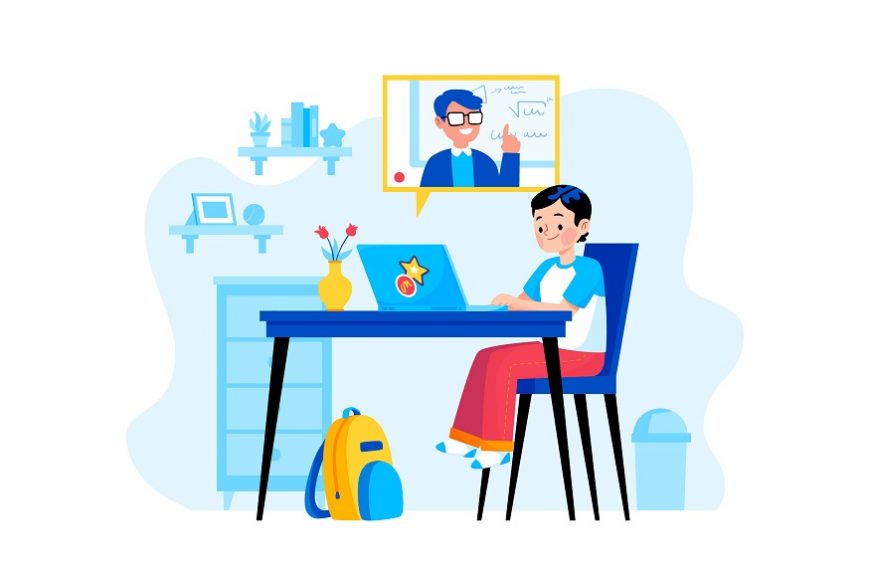In recent years, the field of education has witnessed a significant shift toward innovative teaching methods. One such approach gaining popularity is blended learning. Blended learning combines traditional face-to-face instructions with online learning components, offering a dynamic and flexible educational experience. In this article, we will explore what blended learning is, its advantages and disadvantages, different types of blended learning, and the benefits of blended learning, for both educators and students.
What is Blended Learning?
Blended learning, also known as hybrid learning, is an instructional model that combines traditional classroom teaching with online learning activities. It aims to leverage the benefits of both traditional and digital learning approaches, providing a well-rounded educational experience. The online component can include interactive modules, virtual discussions, multimedia resources, and assessments, while face-to-face instruction allows for direct interaction between teachers and students.
Now, let’s move on to understanding blended learning advantages and disadvantages in detail:
Blended Learning Advantages
- Flexibility:
- Real-world example:
- Enhanced Engagement:
- Real-world example:
- Personalized Learning:
- Real-world example:
One of the major advantages of blended learning is its flexibility. Students can access course materials and complete assignments online at their own pace and convenience. This flexibility allows learners to accommodate their individual learning styles and schedules, promoting a more personalized learning experience.
Imagine a student who excels in mathematics but struggles with writing skills. Blended learning allows them to focus more on writing assignments, accessing online resources, and receiving timely feedback while still participating in face-to-face math classes.
Blended learning incorporates a variety of digital tools and interactive activities that engage students more actively in the learning process. These tools can include educational videos, simulations, gamification, and online discussions. The integration of multimedia elements stimulates student interest, making the learning experience more enjoyable and effective.
A history teacher might use virtual reality (VR) to transport students to historical sites, allowing them to explore and interact with the environment. This immersive experience deepens their understanding of historical events and enhances their engagement with the subject matter.
Blended learning enables educators to tailor instructions to individual student needs. With online assessments and analytics, teachers can identify students’ strengths and weaknesses and provide targeted support. This personalized approach enhances learning outcomes by addressing specific areas for improvement.
An online assessment identifies that a student struggles with algebraic equations. The teacher can then provide additional online resources, such as video tutorials or interactive quizzes, to help the student grasp the concept before the next face-to-face class.
Blended Learning Disadvantages
Technological Challenges: Blended learning relies heavily on technology infrastructure and reliable internet access. In some cases, schools or students may face limitations due to inadequate resources or connectivity issues. This can hinder the seamless integration of online components and create disparities in access to educational resources.
- Real-world example:
- Increased Workload:
- Real-world example:
- Lack of Face-to-Face Interaction:
- Real-world example:
Students from rural or economically disadvantaged areas may not have consistent access to high-speed internet, limiting their ability to fully engage with online learning materials.
Blended learning often requires additional effort from both educators and students. Teachers need to develop online content, adapt lesson plans, and provide technical support. Students, on the other hand, must manage their time effectively to balance online coursework with traditional classroom activities. This increased workload can be challenging for those who struggle with time management or have competing responsibilities.
A teacher who previously only had to prepare for in-person classes now has the added responsibility of creating and updating online modules, grading online assignments, and facilitating virtual discussions.
While blended learning provides flexibility, it may reduce the amount of face-to-face interaction between students and teachers. Direct personal interaction fosters relationship-building, immediate feedback, and clarifications of complex concepts. In a blended learning environment, students may miss out on the benefits of direct human interaction, which can be important for social and emotional development.
Collaborative group work, debates, or class presentations are activities that typically thrive in face-to-face settings, as they encourage teamwork, public speaking skills, and interpersonal relationships. Blended learning may limit the frequency of such activities.
Types of Blended Learning
Blended learning can take different forms depending on the ratio of online to face-to-face instruction. Some common types include:
- Rotation Model:
- Flex Model:
- Self-Blend Model:
Students rotate between traditional classroom activities and online learning stations, often following a fixed schedule. For example, students may spend a specific amount of time in a computer lab or use tablets for online assignments.
This model offers a more self-paced approach, where students have significant control over the time, place, and path of their learning. They can choose to attend face-to-face sessions, complete online assignments, or engage in individualized instruction.
In this model, students voluntarily integrate online learning into their traditional classroom experience to supplement their learning. They may use online resources for further exploration, additional practice, or to delve deeper into specific topics.
Benefits of Blended Learning
The benefits of blended learning are helpful to both educators and students. It improves student outcomes by providing personalized learning experiences, fostering engagement, and accommodating diverse learning styles. For educators, it offers more flexibility in instruction, allows for data-driven decision-making, and promotes the integration of technology in teaching practices.
On a concluding note, blended learning is a powerful approach that combines the best of both traditional and digital learning methods. While it offers flexibility, enhanced engagement, and personalized learning experiences, it also presents challenges such as technological limitations, increased workload, and reduced face-to-face interaction. By understanding the pros and cons of blended learning, educators and students can make informed decisions about integrating this approach into their educational journeys, harnessing its benefits while mitigating its potential drawbacks.
We, at EuroKids, believe in creating a harmonious learning environment that focuses on providing the perfect blend of education with engagement and fun-filled activities. So, enroll your child today














